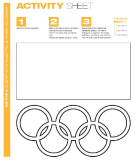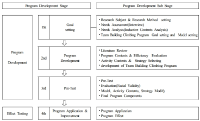
The purpose of this study was to examine the effects of team building climbing program on happiness, social development, self-esteem, stress, and depression of the youth. The participants consisted of 27 university students. The self-report instruments were compose of happiness scale, social development inventory, self-esteem scale, stress inventory, and depression scale. Qualitative data were participants’ perception about the effects of team building climbing program. Firstly, team building climbing program had positive effect on happiness of the youth, while climbing program had not significant effect on happiness of the youth. Secondly, both team building climbing program and climbing program had positive effect on social development of the youth, while team building climbing program was significant higher than climbing program in post-time. Thirdly, team building climbing program had positive effect on stress of the youth, while climbing program had not significant effect on stress of the youth. Fourthly, both team building climbing program and climbing program had positive effect on self esteem of the youth, while there were not significant between team building climbing program and climbing program in self esteem of post-time. Fifthly, both team building climbing program and climbing program had positive effect on depression of the youth, while there were not significant between team building climbing program and climbing program in depression of post-time. Limitations of this study and future implications were discussed.

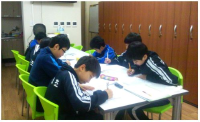
The purpose of this study was to verify the effect on elementary school students in the exercise start stage by performing a sport psychological skill training to improvement of psychological skill and life skill. Participants were eight elementary school boys volleyball player. The program consisted of psychological skills and life skills in educational counseling model of Visek et al(2009). It was conducted 40-50 minutes a session in total for 22 sessions. Data was collected through a psychological test, worksheet and participant observation, in-depth interviews. The collected data was analyzed to verify difference by paird t-test after pre-middle-post test and to extract meaningful data category. Quantity analysis showed that a result of sport psychological skill test proved a significant difference in willingness to overcome, confidence, concentration, anxiety regulation. Life skill test were no significant differences in all factors. However, the rise of scores was observed on result of the pre-middle paired t-test of life skill during season. Quality analysis showed possibility of goal setting, concentration on the routine, decrease of competitive anxiety, increase of positive thinking, self-understanding and understanding of others, promotion of communication among team members. This sport psychology skill training had a significant effect on the psychological skills of elementary players change. But it seems to be necessary life skills in a more through review of the information.


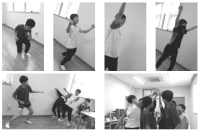
This study was to explore the factors influencing Olympic performance positively and negatively. In order to achieve this purpose, 60 athletes, who participated in 2012 London Olympic games, responded on open-ended questionnaire. In addition, 10 athletes, who won medals in London Olympic, responded on in-depth interview. Collected data were analyzed by deductive content analysis. The results of this study were as follows: firstly, the factors influencing Olympic performance positively were psychological preparation, strengthening training, physical conditioning, support from significant others, material support, cheering of Korean people, self respect as a Korean national athlete, different game environment, team cohesion, sharing Olympic experience, and support of sports science. Secondly, the factors influencing Olympic performance negatively were psychological pressure, excessive expectation, negative interpersonal relationship, condition decline, overtraining, unstable environment, insufficient facilitation, decrease in performance level, and especially ineffective village room placement and media management during Olympic period. Thirdly, the differences between Olympic games and other world competitions , perceived by athletes were competition scale, psychological attitude, training support, systematic preparation, and benefits from winning medals. The results of this study will give fundamental information in developing a scale which can measure Olympic preparation level and in developing Olympic preparation guideline. Therefore, it will help athletes ,who participate Olympic for the first time or athletes who did not perform well in pre-participated Olympic games, to understand and apply in training the factors influencing Olympic performance and help them to perform better in Olympic games.

Purpose: The purpose of the present study was to identify the difference of overall putting accuracy and/or distance control among three visual conditions; executing putt focusing vision on the near target(ball), focusing on the far target(hole), and with no vision. In order to satisfy ecological validity, the test was held not on the synthetic putting green in a laboratory, but on the outdoor real putting green. Methods: A putting green with slight slope and minimal break was selected as the test site. The test was held at 8.5m uphill, 13m uphill, 8.5m downhill, and 13m downhill. Twenty participants were asked to putt the ball as close to the target as possible. They were also asked to adhere to their own pre-putt routine having enough time of visual fixation toward the hole to get distance and direction cues. Each Participant putted a total of 12 balls putting 3 balls on each distance-slope experimental condition. Overall putting accuracy score represented actual distance (in meter) from the far target(hole) to the ball rest. Distance control score represented it from the near target(original ball position) to the ball rest. Repeated measure ANOVA was used to verify the raw data. Results: Putt from 8.5m uphill and putt from 13m downhill were revealed to have statistically significant difference only in distance control by visual focus conditions. Putt focusing vision on the ball was the best at 8.5m uphill. Putt focusing vision on the hole was the best at 13m downhill. However, there was no significant difference in overall putting accuracy by visual conditions. Discussion & Conclusion: The results of our study are interesting and valuable from two aspects. First, the presumption is that overall putting accuracy on the real putting green has no significant difference by visual conditions because it is affected by various factors, i.e. memory of distance, slope, break, turf condition, impact quality, body alignment, etc. Second, no consistent evidence was detected that specific visual condition, especially executing putt focusing vision on the hole, was the best for distance control.

PURPOSE The purpose of this study was to investigate the applicability of proprioceptive-dependent training as an effective physical training method by analyzing the effects of proprioceptive-dependent training on the accuracy of perceived and actual distance as well as the correlation between the changes in the two variables. METHODS Thirty-six male college students took part in the experiment. Participants were beginners with no previous experience in golf or less than five times of experience. They were randomly assigned to one of three groups; proprioceptive-dependent training, visual-dependent training, and control, maintaining the same sample size per group. The experiment was carried out in the order of pre-test, practice section, and post-test. In the pre-test, putting was tested to assess the accuracy of perceptual and actual distance in the 1-15m distance in a random order using a digital putting analyzer. In the practice section, proprioceptive-dependent and visual-dependent training groups practiced a total of 90 putting, six times per distance with the eyes closed or open. The post-test was the same as the pre-test. The accuracy of perceived and actual distance and the correlation between the changes in the two variables were analyzed using the calculated absolute errors. RESULTS The results of this study showed that there was no difference between groups in pre-test. In contrast, in post-test, the absolute error was significantly decreased in the order of proprioceptive-dependent training, visual-dependent training, and control group in the three distance conditions. Besides, for the proprioceptive-dependent training group and visual-dependent training group, there was a significant positive correlation between the changes in the accuracy of perceived and actual distance. CONCLUSIONS These results provide insight into the applicability of proprioceptive-dependent training for enhancing motor performance by showing the effects of proprioceptive-dependent training on perceived distance, actual distance, and the correlation between the two variables.
PURPOSE This study aimed to analyze the moderating effect of physical fitness on the relationship between abdominal obesity and metabolic syndrome (MetS) in older women. METHODS A total of 190 participants were categorized based on waisthip ratio (WHR) into high (50%) and low (50%) groups, as well as based on Z-score of fitness into high (25%; high fit), moderate (50%; moderate fit), and low (25%; low fit) groups. Logistic regression was used to assess the relative risk of MetS based on abdominal obesity and fitness levels, and moderation analysis using the Process macro was conducted to explore the moderating effect of fitness on the relationship between abdominal obesity and MetS risk factors. RESULTS After adjusting forcovariates, logistic regression showed that high WHR (odds ratio (OR)=2.721, p=0.004) led to a significantly higher risk of MetS compared with low WHR; the high fit group (OR=0.360, p=0.044) had a significantly lower risk of MetS compared wih the low fit group. Moderation analysis revealed that the impact of abdominal obesity on MetS risk factors varied depending on the level of fitness (β=-0.495, p=0.037), and the results remained significant after covariate adjustment (β=-0.458, p=0.049). CONCLUSIONS This study suggests that the risk of MetS from abdominal obesity can be mitigated by higher levels of physical fitness. These findings highlight the need for participation in regular physical activity to maintain a high level of fitness, along with proper nutritional intake, to prevent MetS in older women.
PURPOSE Neuromarketing measures and analyzes the unconscious response of consumer brain waves to marketing stimuli in real time. This study examined how a sensational scene (accident) in a sport game influences the sponsorship effects through electroencephalography (EEG) analysis. METHODS The current study uses an experimental method. First, as an experimental stimulus, a video of F1 racing edited in a total of 9 min and 39 s was used, and an accident scene was inserted in the middle of the video. A total of 46 people participated in the experiment, and all participants watched the F1 video, including the accident scene. Participants' brain waves were observed in two prefrontal and two occipital lobes. The relationship between scene sensation and sponsorship effect was analyzed based on alpha waves and the sponsor brand recall measured by questionnaires. RESULTS First, the accident scene of the race caused the power of alpha wave to be abruptly reduced (i.e., alpha blocking). Second, the difference between the alpha power level of the group that recalled the sponsor brand and that of the group that did not recall was statistically insignificant; hence, the hypothesis was rejected. Third, the right-brain dominance (negative emotion) in the accident scene of the race was statistically insignificant; therefore, the hypothesis was rejected. Finally, the group that recalled the sponsor brand showed a left-brain dominance (positive emotion), which was statistically significant. CONCLUSIONS This study confirmed the marketing communication and neuromarketing theories on the sponsorship effects created by stimulation, attention, and memory in a sport sponsorship setting, observing alpha blocking phenomena in a sensational scene (accidents). In addition, it was revealed that the group that watched the same accident scene relatively positively and exited remembered the sponsor brand better than the group that did not watch it. The result implied that sport fan’s personal trait (e.g., sensation seeking) to sensation in sponsorship activities affects the sponsorship effect. The results also emphasized the importance of selecting target customers of sports fans in sponsorship to maximize sponsorship effects.
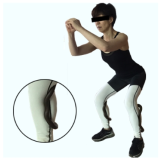
Purpose This study was designed to investigate the effects of weight-bearing exercise and CareRing treatment on cardiovascular responses, popliteal vein functions, and vascular elasticity of 30-40s women who had worked longer than eight hours a day in a standing position. Methods Thirteen subjects participated in 30 min of standing up treatment (STAND), weight-bearing exercise treatment (EX), and weight-bearing exercise with CareRing treatment (EX+RING). Each subject took part in the three trials repeatedly in a counter-balanced order and proceeded with a wash-out period of at least one week between the respective trials. Results The main results were as follows: 1) Significant reduction in EDV, no change in the diameter of popliteal vein, trend of reduction in blood flow of popliteal vein, and increased baPWV, indicating reduction of vascular elasticity of whole body, were shown in the STAND. 2) CO and EF increased significantly, and TPR decreased significantly in the EX. Blood flow velocity and blood flow volume of popliteal vein increased significantly, and baPWV decreased significantly from immediately after the treatment throughout the recovery phase in the EX. 3) HR, CO, and EF increased significantly in the EX+RING. Blood flow velocity and blood flow volume increased significantly in the EX+RING. Diameter of popliteal vein increased significantly immediately after the treatment and decreased significantly at 40 minutes of recovery. TPR and baPWV decreased significantly immediately after treatment compared to the STAND. Conclusions It was concluded that weight-bearing exercises would be effective in preventing venous or cardiovascular diseases occurred due to long-standing in 30-40s women, who are at high risk for such diseases. Furthermore, it would be more effective to combine pressure treatment with CareRing during weight-bearing exercises.

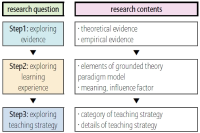
Purpose The purpose of this study was to understand learning experiences deeply and to prepare practical teaching strategies by reflecting the voices of the field. Methods For this, I used the logic and techniques of 'the grounded theory'. In particular, I used ‘the grounded theory paradigm model', which enables a holistic and systematic analysis of specific experiences to explore learning experiences and teaching strategies. I selected 10 male and female students who participated in art and physical activities as research participants. I collected data through literature review, in-depth interviews, and expert meetings, and analyzed using open coding, axial coding, and selective coding. Results First, I explored “the learning experience of art and physical activities in free-semester system", according to the elements of grounded theory paradigm model. It is composed of the ’causal condition’, ‘contextual condition’, ‘central phenomenon’, ‘interventional condition’, ‘interaction strategy’, and ‘results’. Second, based on this, I conducted "the teaching strategies for art and physical activities in free-semester system". These are composed of 'expansion strategy', 'diversity strategy', 'spontaneity strategy', and 'immersion strategy'. Conclusions The results of this study suggest that art and physical activities in free-semester system are leading to a positive change extended from the planned goals. In addition, various variables are structurally intertwined, and thus, it is considered that more strategic and systematic efforts are required in various dimensions for the successful application.


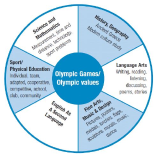
[Purpose] This study aims to examine necessity and characteristics of the K-OVEP, and discuss ways of settle and spread the program stably through cases applied in school settings. [Methods] To do so, educational components and curriculum of the K-OVEP was represented by analyzing references, developmental materials, and program application. This study was examined through the application process and observation of long-term program of the K-OVEP from two types of educational fields, 2 elementary schools and 2 middle schools. In order to examine if the K-OVEP achieves the aim of the IOC and the K-OVEP, basic level study was conducted to 187 students who participated in the program in 2016. The questionnaire consisted of three categories; ‘cognition part’ through the Olympic games and the Olympic values, ‘value part’ regarding five educational themes of the OVEP, and ‘interest part’ asking interest and involvement in sports activities, participants answered the questionnaire before and after the education. [Results] We found that K-OVEP is an integrated value based educational program regarding Olympics, stresses personality education, encourages students to explore their career, and is a process oriented education. The results showed that the K-OVEP achieved the educational goals in every categories and questions, and educational effects in sports activity looked different among schools and the environments. [Conclusion] This study was performed to participants at first year of the introduction of the K-OVEP, so in order to keep track of learners’ significant change continuously, expansion of participants, steady development of various new programs, development of assessment tools, experts training and follow-up studies will be required.

